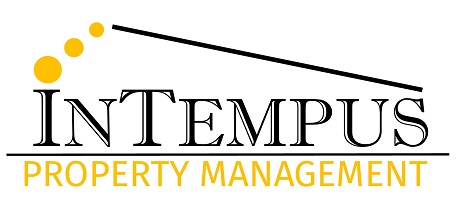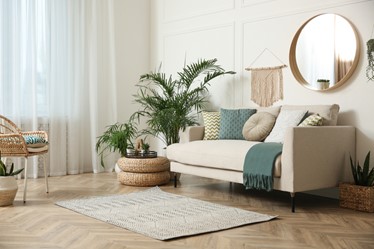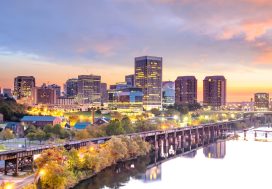You are aware that first impressions count if you have ever rented out an apartment or even just visited one. Before they even envision where their couch might go, a well-designed room can captivate someone. Attracting tenants who appreciate the space, take care of it, and remain longer is more important to property owners and managers than aesthetics alone. Let’s examine current apartment design trends and how they are subtly changing tenant expectations.
Why Design Is More Important Than Ever
The rental market has changed. Tenants seek a lifestyle, not just a place to live. This is particularly true in markets with high competition, where new listings appear daily. Professionals, young families, and even remote workers looking for a home that doubles as an office are drawn to apartments that are thoughtfully designed because they convey care, quality, and modern living.
Consider this: would you rather live in a room that has been created with you in mind, or a beige box? A casual viewer becomes a regular renter because of that subtle sense of intentionality.
Trend 1: Open layouts and natural light
Although they are not particularly new, open floor plans are becoming increasingly popular. Renters today are drawn to spacious, light-filled spaces where dining, cooking, and relaxing can all coexist. Knocking down unnecessary walls or using glass partitions can make a modest apartment feel twice its size.
Natural light is also essential. Skylights, large windows, and even well-placed mirrors can drastically change how tenants feel about the space. In addition to looking better in pictures (hello, instant marketing boost), a brighter home is more comfortable to live in.
Trend 2: Thoughtful storage that doesn’t appear to be storage.
Both clutter and minimalism without purpose are detrimental to contemporary design. Clever under-stair drawers, concealed cabinets, and built-in shelving are quickly becoming necessities. These additions maintain a sleek, modern appearance while offering practical storage.
In a small studio, for example, you can solve a significant problem for renters without sacrificing design by utilizing floating shelves or incorporating storage into headboards. These minor yet essential details enhance the whole living experience.
Trend 3: Using Sustainability as a Differentiator
Eco-conscious living has moved from niche to mainstream. Tenants are actively looking for sustainable materials, LED lighting, and energy-efficient appliances. In addition to their positive effects on the environment, these features also help renters save money on their utility bills.
Simple details like low-VOC paints or bamboo flooring show that you’ve invested in a healthier lifestyle. Applying the same mentality to apartment design can make your property stand out in a time when consumers research brands and read labels before making a purchase.
Trend 4: Common Areas and Common Facilities
Excellent tenants are becoming part of a community rather than merely renting an apartment. In contemporary buildings, rooftop lounges, co-working spaces, and exercise areas are becoming more prevalent. Outdoor seating areas or communal gardens foster a feeling of community even in smaller complexes.
Here, you don’t need to spend a fortune. The “wow” factor of a fully functional rooftop deck can be achieved with a few cozy chairs and a well-kept courtyard. It’s about creating connection, which is something that many renters desire in their increasingly digital lives.
Trend 5: Customizable Design
You can design an apartment with personalization in mind, even though you can’t make it unique for each tenant. Renters are given a blank canvas without feeling sterile when neutral color schemes are combined with statement fixtures (think geometric light pendants or matte black faucets).
Some landlords even offer unique move-in benefits, such as a gift card to create collage prints of individual pictures for décor. This little act demonstrates your concern for making the room feel like their home right away.
Smart Technology and Small Businesses: An Advantage for Landlords
The distinction between small business efficiency and residential design is becoming more hazy. Adopting the appropriate technology can revolutionize the operations of many property managers and landlords, who are essentially running small businesses. Your rental properties can stand out in crowded listings with tools like smart locks, cloud-based maintenance trackers, or even an AI logo generator for branding.
Purchasing hardware such as energy-monitoring thermostats or software that sets up automated rent reminders is not only fashionable but also economical for property owners who oversee several apartments. Selecting technology that streamlines rather than complicates your workflow is crucial.
Putting It All Together: Useful Actions
So, how can you implement these trends without completely renovating your home? Begin modestly:
- Audit the natural light – To increase brightness, add mirrors or replace heavy drapes with sheer curtains.
- Use multipurpose furniture, such as wall-mounted desks or ottomans with compartments, to add hidden storage.
- Make sustainable improvements – Install water-saving aerators in faucets or energy-efficient lightbulbs.
Establish a communal seating area or a basic notice board in the lobby to foster a feeling of community.
- Leverage tech – Examine property management software to expedite repairs and tenant communications.
Even though each action might not seem like much, taken as a whole, they produce an atmosphere that tenants value and suggest.
The Benefit: Increased Returns and Contented Tenants
Intentional design is more than just creating apartments that look good on Instagram, though that certainly helps. The goal is to create an environment that people want to maintain. Homes that reflect contemporary lifestyles-open, practical, sustainable, and community-focused-attract top-tier tenants. Tenants who are proud of their residence tend to stay longer, take better care of the property, and frequently recommend it to others.
Put differently, quality design is an investment rather than a cost. And it could be your most potent advantage in the cutthroat rental market of today.





